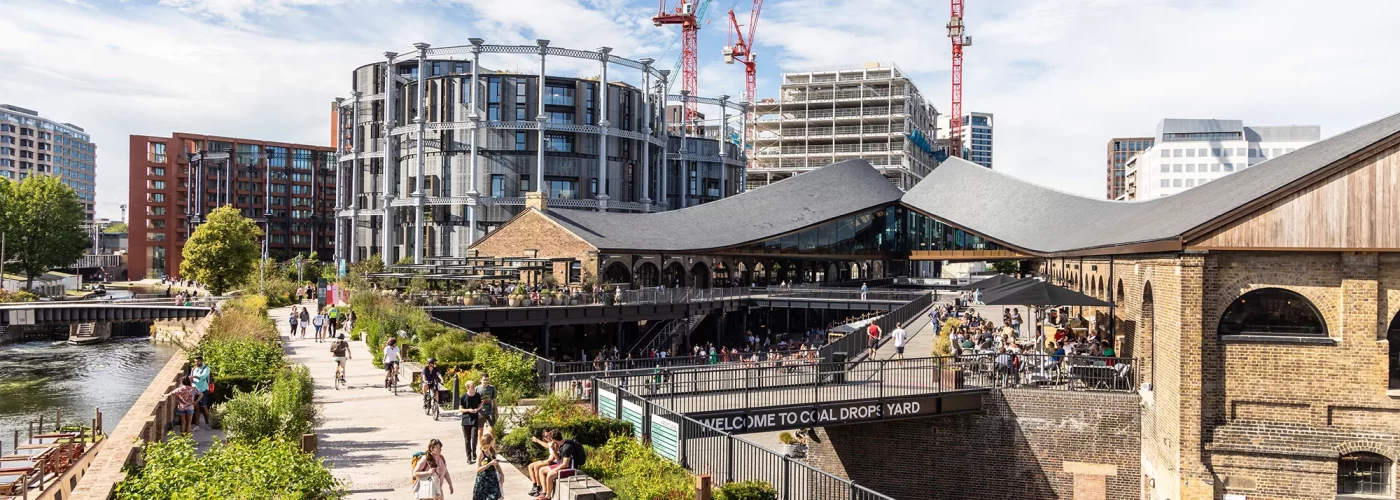The rejuvenation of urban areas is a delicate balance between honouring history and embracing progress. As cities evolve, once-overlooked areas can transform into vibrant hubs of activity, but this transformation demands meticulous planning and execution. In London, the successful transformation (now complete) of King’s Cross serves as a beacon of regeneration, offering valuable insights for neighbouring districts like Euston.
Euston, akin to King’s Cross, boasts a rich historical tapestry and holds tremendous potential for regeneration. As a pivotal transport hub in London and home to iconic landmarks such as Euston Station, the area has long been earmarked as a prime candidate for large-scale rejuvenation. The eagerly anticipated development of Euston is poised to draw inspiration from the achievements of its neighbouring King’s Cross.
With Lendlease leading the charge, it’s noteworthy that Euston’s engagement with the local community is beginning to take centre stage. Much like the transformation of King’s Cross, which saw significant input from thousands of local residents and businesses throughout the Knowledge Quarter, this collaborative approach ensures that the regeneration aligns with the community’s needs and aspirations, fostering a sense of ownership and pride in the area’s revival.
Moreover, King’s Cross underscores the importance of preserving and repurposing existing infrastructure. While Euston may lack the luxury of retaining historic buildings to the same extent as King’s Cross, where around 20 buildings were preserved, breathing new life into Victorian-era structures, preserving the area’s architectural legacy, and infusing character and authenticity into the regenerated space.
Transport connectivity is pivotal to the success of King’s Cross regeneration, and Euston stands to benefit from significant enhancements with the eventual arrival of HS2, laying the groundwork for substantial economic and employment growth in the capital.
King’s Cross is renowned for its emphasis on expansive, green, open spaces. Euston has the opportunity to build on this legacy by creating an environment that prioritises sustainability and offers a welcoming atmosphere for residents and commuters alike, transcending the current transient experience.
Additionally, under the guidance of Argent, King’s Cross exemplifies the value of mixed-use development in cultivating vibrant, inclusive communities. By seamlessly blending affordable, private, and student accommodation with commercial and cultural spaces, King’s Cross caters to a diverse range of residents, fostering a lively and dynamic neighbourhood. Euston is poised to replicate this approach, diversifying its urban landscape and providing opportunities for people to live, work, and socialise within the area. Euston will evolve into a new London destination, rather than merely a thoroughfare for travellers.
Although the revitalisation of Euston, particularly in light of the proposed and delayed arrival of HS2, has been a lengthy process spanning 15 years, it pales in comparison to the journey of King’s Cross. While initial schemes for Euston in the late 1980s and throughout the 90s failed to materialise, the delivery of King’s Cross’s vision over nearly a quarter of a century has elevated London’s status. The timeline of Euston’s regeneration may feel like a marathon at present, but once realised, the triumvirate of King’s Cross, St Pancras, and Euston will fortify London’s global presence. There is much anticipation for the future of Euston.

Building, Design & Construction Magazine | The Choice of Industry Professionals





